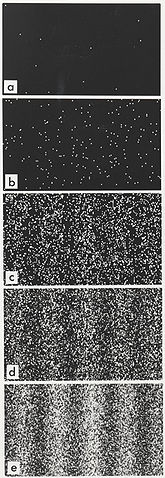Classical Computing & the Bit
Classical computing’s foundation relies on the unit of information known as the bit. A bit can store a Boolean value, that is, either true or false. In computer science bits are represented by 1s or 0s, corresponding to true and false respectively. Using only a few bits computers can build all the basic logical operators such as AND, NAND, OR, NOR, XNOR, XOR, NOT, which are represented as logic gates in digital circuits. Physically, these systems are made with semiconducting materials, known as transistors that work by using two different voltages as the Boolean values.
1=True 0=False A & B are Boolean values Y=Output
AND (A and B) OR (A or B) NOT (A not B) NAND (Not A and B)
NOR (Not A or B) XOR (Exclusively A or B) XNOR (Exclusively not A or B)

Figure 1: Logic Gates in Digital Electronics
Retrieved From: http://verticalhorizons.in/quick-snapshot-of-logic-gates-in-digital-electronics/
As seen in the above figure, logic gates take two Boolean inputs and output another. All the shapes seen are merely used by convention, except for the bubble. The bubble indicates a signal inversion of an output, meaning for whatever was originally going to be outputted the opposite would actually be outputted. With these logic gates we can build the complex computer systems seen today.
A Little Quantum Theory
In order to understand how quantum computers work, some basic quantum mechanics is needed. Schrödinger’s Equation is used to describe how the quantum state of a physical system changes with respect to time. Schrödinger’s Equation also happens to be a wave equation which brings about the notion of wave-particle duality, meaning systems can behave as both particles and waves. Seen below is an example of this known as the double slit experiment. It involves shooting an electron towards two openings and observing where it ends up on the other side. Intuitively it would seem to make sense that if one were to shoot many electrons through the slits, one would see two equal groupings on the other side. But this is not the case. Instead we find a wave interference pattern proving that electrons, which are particles, also behave like waves.

Figure 2: Electron Interference Pattern
Retrieved From: http://upload.wikimedia.org/wikipedia/commons/thumb/7/7e/Double-slit_experiment_results_Tanamura_2.jpg/165px-Double-slit_experiment_results_Tanamura_2.jpg
Because of the quantum nature of reality, there is a limit to how much information can be inferred from a system and instead one must work with probabilities of a given system being in a given state. This is why one can never predict exactly where the electron will end up on the other side as that observation would affect the outcome, instead only a probability can be given. The quantum state, often called the wave function, contains all the information about that system which can then be derived to gain specific information, such as momentum or position. When the wave function is left unsolved, the particle in question is said to be in quantum superposition, existing in all possible quantum states at once. This fundamental property is what allows the possibility of quantum computations.
Quantum Computing & the Qubit
The basic unit of information in a quantum computer is the qubit. A qubit is a two-state quantum system, with each of its possible states existing in superposition. So unlike a classical bit, which can hold either a 1 or a 0, qubits can hold both a 1 and 0. This allows for immense gains in the amount of information held when comparing qubits to bits. For example, while 8 bits (1 byte) can hold 8 Boolean values, 8 qubits can hold 28 Boolean values.